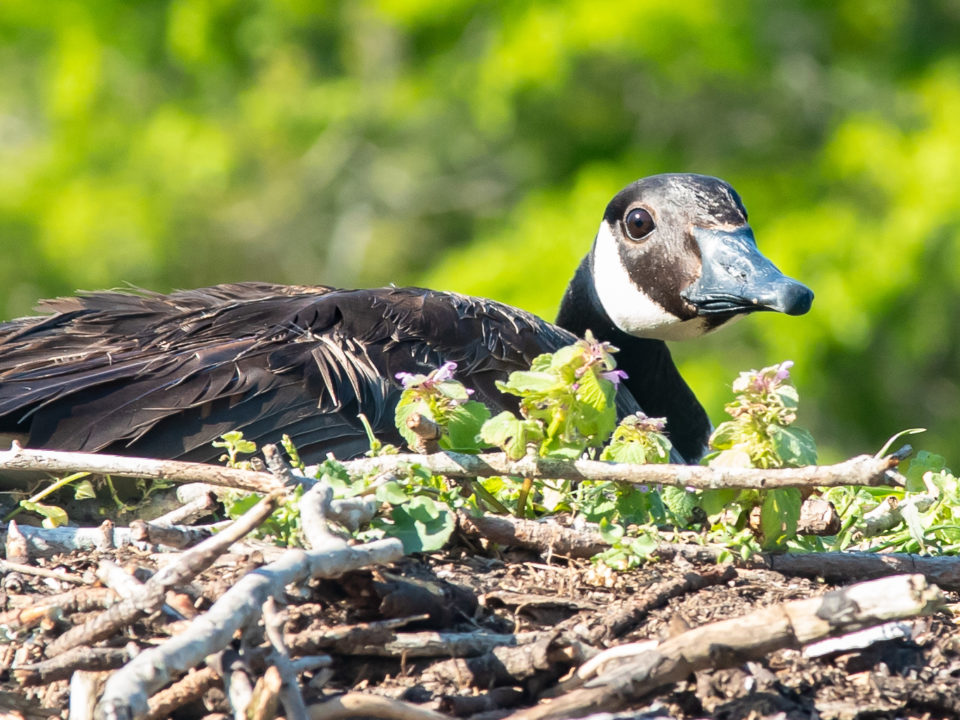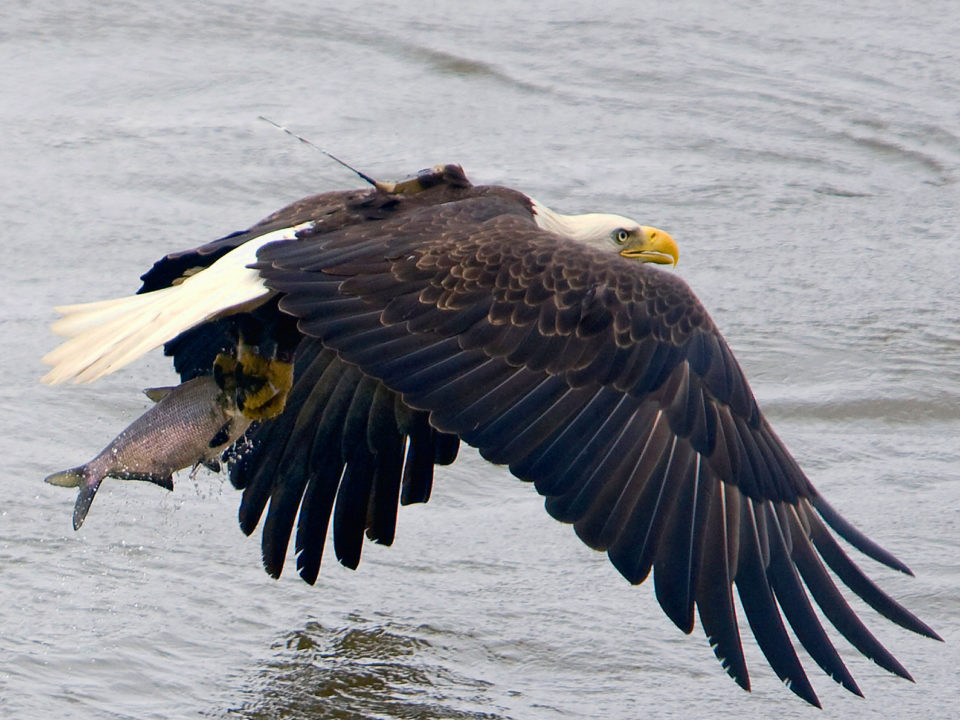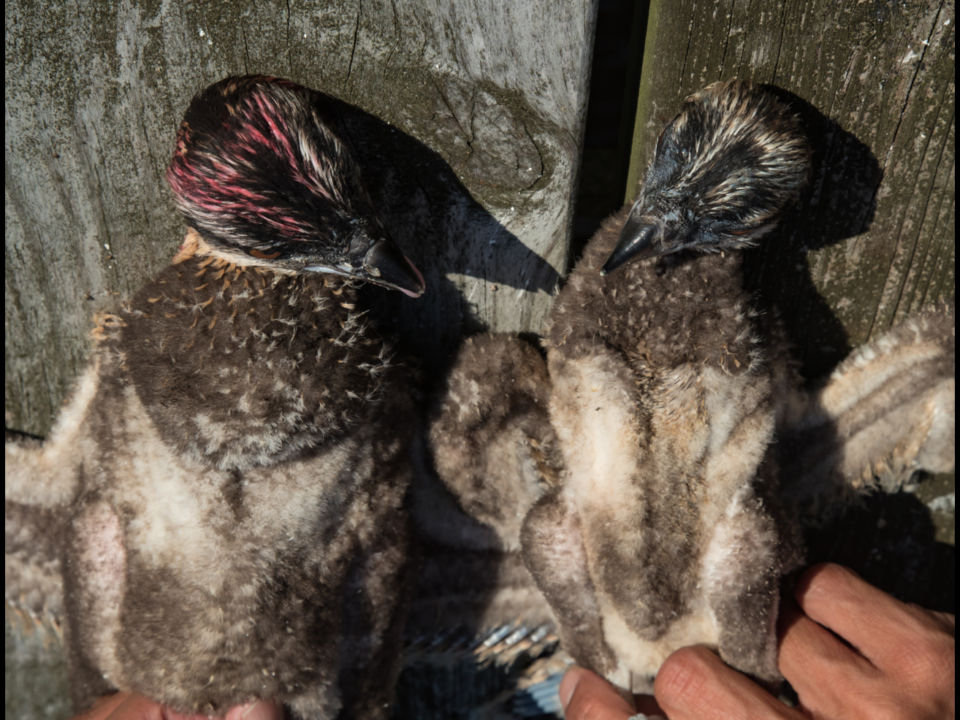At Home on the Islands
Wild bet on woodpeckers pays off
March 29, 2016Our Avian Heritage
April 1, 2016
The Virginia Barrier Islands have been recognized for their extraordinary birdlife for centuries by the locals. As word of this incredible place spread, waterfowl and shorebird hunters, bird collectors, researchers, and early photographers, flocked to the islands supporting a very early ecotourism industry by the late 1800s. Early egg and bird collectors came from far and wide and today specimens from the area are distributed in museums throughout the world. Olin Sewell Pettingill, the noted ornithologist and film maker from Maine, famously spent his honeymoon (no doubt to the excitement of his young wife Eleanor) in June of 1933 on Cobb Island photographing black skimmers and terns.
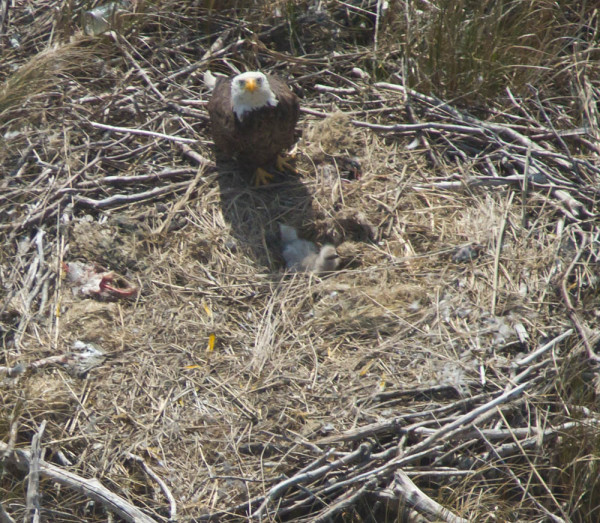
Adult bald eagle standing on the ground and shading 10-day-old young in a nest built within the dunes of Little Cobb Island. The bird is looking up at the survey crew as we fly overhead. Photo by Bryan Watts.
Through all of this history, the source of the islands’ notoriety has been their support of large numbers of shorebirds and beach-nesting waterbirds. The islands have never been touted for their support of breeding eagles. Prior to the decline of eagles during the DDT era, only a single bald eagle nesting record was known for the island chain (a pair on Parramore Island).
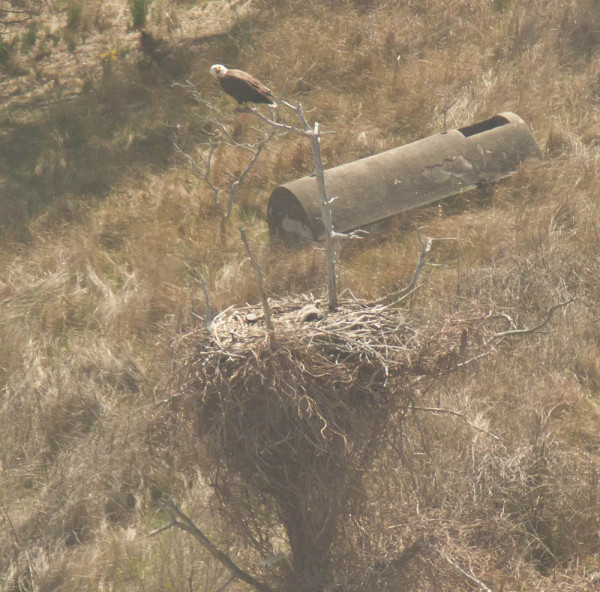
Adult bald eagle with small young in a nest built within a dead cedar tree on Hog Island. Photo by Bryan Watts.
Over the past decade as the bald eagle population within the Chesapeake Bay and along the Delmarva Peninsula has recovered, observations of eagles along the outer islands have increased dramatically. Bryan Watts and Barry Truitt flew weekly shorebird surveys along the island chain during the 1990s. During this time, recording three eagles along the 100 kilometers of open beach was a big day. After 2010 it has been common to see 15 to 25 eagles of all age classes loafing along the beaches. However, breeding eagles did not begin to colonize the islands in any numbers until after 2010, and in 2011 only three active territories were known.
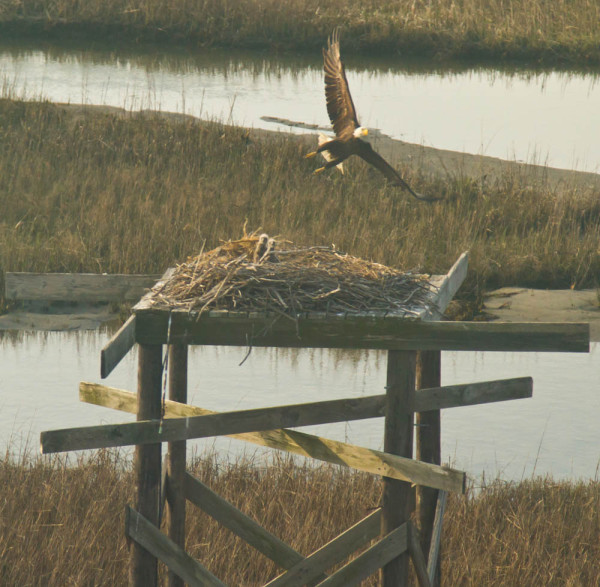
Two 18-day-old eaglets in a nest built on an old peregrine tower on Fisherman Island. Photo by Bryan Watts.
The islands were recently surveyed by Bryan Watts, Mitchell Byrd, and Captain Fuzzzo as part of the 2016 bald eagle breeding survey. Surprisingly, the crew mapped 11 eagle nests on the islands including six in loblolly pines, two in small trees or shrubs, one on the ground in the dunes, and one on an old peregrine tower. Ground nests are particularly rare in bald eagles except beyond the tree line in high latitudes. Two ground nests have been documented on the islands in the past four years and these represent the first to be recorded along the Atlantic Coast (read more about ground nests on the islands).
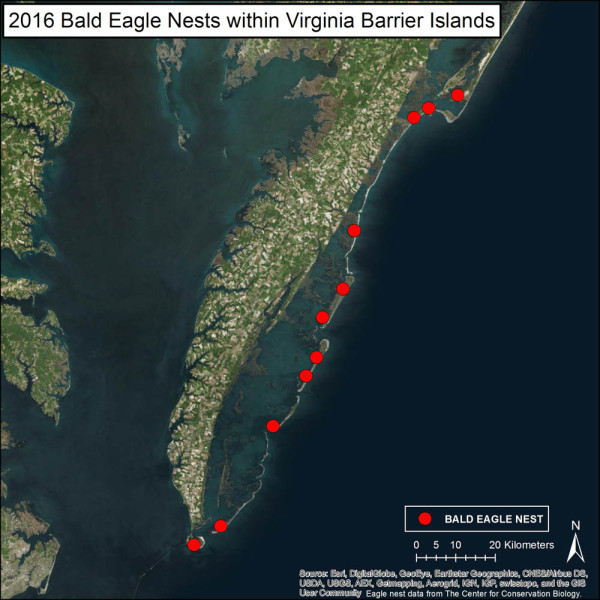
Map of bald eagle nests along the Virginia Barrier Islands. Data from CCB.
Adding bald eagles to the breeding avifauna of this rich landscape is in some ways unexpected. Seeing them nesting among the dunes and standing in the surf extends our perception of their ecological boundaries.
Written by Bryan Watts | bdwatt@wm.edu | (757) 221-2247
March 30, 2016
Related posts
A brood of osprey in Mobjack Bay showing a well-fed chick (left) and an emaciated chick (right). The chick on the right would die the following week due to starvation. Work in Mobjack Bay over a 40+ year period has shown that both reproductive rates and food delivery rates have declined dramatically. The decline in provisioning has led to an increase in brood reduction or chick loss due to starvation. Photo by Bryan Watts.

